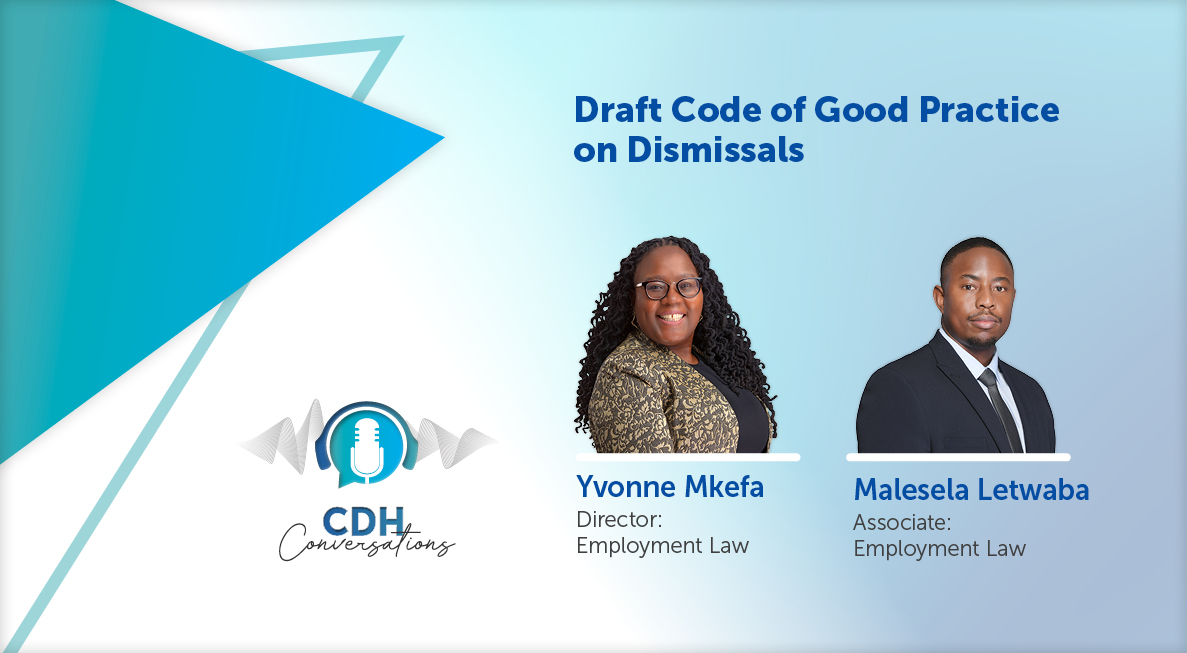Retrenched in retirement: When time no longer equals money
At a glance
- The regulation of contractual relationships between retired employees and their former employers is often insufficient, leading to disputes and claims of age discrimination.
- The February 2021 Labour Appeal Court decision in Barrier v Paramount Advanced Technologies highlighted the importance of sections 41(2), 84(1), and 84(2) of the Basic Conditions of Employment Act in determining the impact of an employee reaching retirement age but continuing to work for their former employer on severance pay calculations in a retrenchment scenario.
- The court concluded that if there was no break in employment and the employee's contract terminated but they continued working seamlessly, the employee's employment should be considered continuous, entitling them to severance pay for the entire period of service. The court ordered the employer to pay the employee the full severance pay owed, which was significantly more than what the employer initially calculated. Employers should carefully manage the employment of retiring employees and properly regulate their post-retirement relationships to avoid potential liabilities.
The facts in the February 2021 Labour Appeal Court decision in Barrier v Paramount Advanced Technologies (Pty) Ltd are not out of the ordinary but deserve attention. The dispute before the LAC centered around whether there was a “break” as contemplated in section 84(1) of the Basic Conditions of Employment Act 95 of 1997 (the Act) when Mr Barrier reached the age of 65, but continued (seamlessly) to work for the company until he was retrenched almost four years after the termination of his permanent contract of employment.
The case deals with important practical issues related to the interplay between sections 41(2), 84(1) and 84(2) of the Act in determining what impact an employee reaching retirement age, but nevertheless continuing with their former employer has on length of service and the calculation of severance in a retrenchment scenario:
- Section 41(2) provides that a retrenched employee is entitled to one-week’s severance pay for each completed year of “continuous service” with the employer.
- Section 84(1) gives content to the meaning and calculation of “continuous service”, by providing that if there is a break in an employee’s service of less than one year, that break period will not be taken into account for the purpose of determining the length of service of that employee. (In effect, an employee will be deemed to be continuously employed by an employer notwithstanding a short break between periods of employment). The phrase “continuous service” is not expressly defined in the Act.
- Section 84(2) provides that any payment made to an employee during a previous period of employment must be taken into account in determining an employee’s entitlement to further payments.
Briefly, the appellant had been in the employ of the company since 1985 when it was agreed that his employment would terminate upon him reaching the age of 65. However, in 2013 when Mr Barrier turned 65, he continued to work for the company uninterruptedly. It was only in 2017, approximately four years later, that Mr Barrier was retrenched.
The dispute related to the severance amount that had to be paid to Mr Barrier. The company’s position was that Mr Barrier was entitled to only three weeks, being the period post-retirement from 2013 to 2017. Conversely, Mr Barrier’s position was that he was entitled to 32 weeks’ compensation – being the period he worked as a permanent employee from 1985 to 2017.
The LAC was called upon to determination this question: Does the termination of the written contract of employment (concluded in 1985) by the effluxion of time when Mr Barrier turned 65, and in the absence of a written extension thereof, constitute a “break” as contemplated in section 84(1) for the purpose of determining severance pay?
The LAC in considering the dispute started from the point of indicating that the correct question is not one related to the length of the continuous service but actually whether there had been a “break” in the first place, and whether an employee was entitled to severance pay for an earlier period, in light of the payment the employee was entitled to (or had received) at the end of the first period. The LAC held that it is evident from section 84(1) that the “break” contemplated is a time lapse between periods of employment.
Put differently, the determination of the entitlement of an employee, who has had more than one period of employment with an employer, to severance pay, requires the application of section 84(1) to determine the length of service, but also, requires the application of section 84(2), which obliges the employer to take into account “any payment” made to that employee in the previous period(s) of his employment with the same employer.
The LAC drew this analogy: an employee, employed for a long period with the same employer, does not lose his entitlement to severance pay when he is, after all those years, retrenched by the employer because the employer had been paying him generously and faithfully his salary and bonuses over the period of his employment. Such an employee also does not lose his entitlement to the retirement benefits he had accumulated until then. If an employee had been retrenched and paid a severance and then rehired by the employer, then this initial payment would of course be taken into account when calculating the period for severance pay due upon a second retrenchment, to avoid a duplication of payment. On the other hand, if an employee had been paid retirement benefits in a previous period of employment (and not severance pay), this would not lead to a duplication if the employee were, later, to be paid severance pay calculated to cover the same, previous period. This is because, the LAC concluded, severance pay is an additional payment from the employer which is meant to soften the blow of unemployment and is distinct from “benefits” such as pension/provident fund payments.
The LAC put it as such: If the above is so in the normal course, why must an employee who had been employed over different periods, albeit deemed to be in continuous employment, i.e. if section 41(2) is read with section 84(1), to be treated differently? Why must she be disentitled to the statutory severance pay contemplated in section 41(2) (read with section 84(1)) because of a pension, or provident fund, pay out made to her in a previous period of employment, and to which she is entitled by law?
So, was Mr Barrier entitled to his severance pay?
The LAC concluded that Mr Barrier, despite turning 65, had continued to work in the employment routine that he had been following since 1985 – there had not been a “break” of even one working day – and though his written contract of 1985 had (strictly in law) been terminated, this made no difference to his employment routine. As such, Mr Barrier’s employment with the company was “continuous” from 1985 until he was retrenched in 2017, despite his contract terminating and him working beyond his retirement age. There had been no “previous period of employment” and as such, section 84(2), which contemplates a previous period, was not applicable.
Mr Barrier’s uninterrupted employment with the respondent from 1985 until 2017 therefore entitled him to one week’s severance pay for each completed year of service and the court ordered that the company pay him the further 29 weeks’ severance pay that he had not been paid on his “second termination”. This was a payment in excess of R1,000,000 as compared to the circa R140,000 which the company computed was payable to him on his retrenchment.
Employers need to be extremely considered when it comes to the employment of retiring employees and to properly regulate and manage the further relationship to avoid unintended liability especially now in the instance of a retrenchment scenario during the post retirement employment years.
The information and material published on this website is provided for general purposes only and does not constitute legal advice. We make every effort to ensure that the content is updated regularly and to offer the most current and accurate information. Please consult one of our lawyers on any specific legal problem or matter. We accept no responsibility for any loss or damage, whether direct or consequential, which may arise from reliance on the information contained in these pages. Please refer to our full terms and conditions. Copyright © 2026 Cliffe Dekker Hofmeyr. All rights reserved. For permission to reproduce an article or publication, please contact us cliffedekkerhofmeyr@cdhlegal.com.
Subscribe
We support our clients’ strategic and operational needs by offering innovative, integrated and high quality thought leadership. To stay up to date on the latest legal developments that may potentially impact your business, subscribe to our alerts, seminar and webinar invitations.
Subscribe



